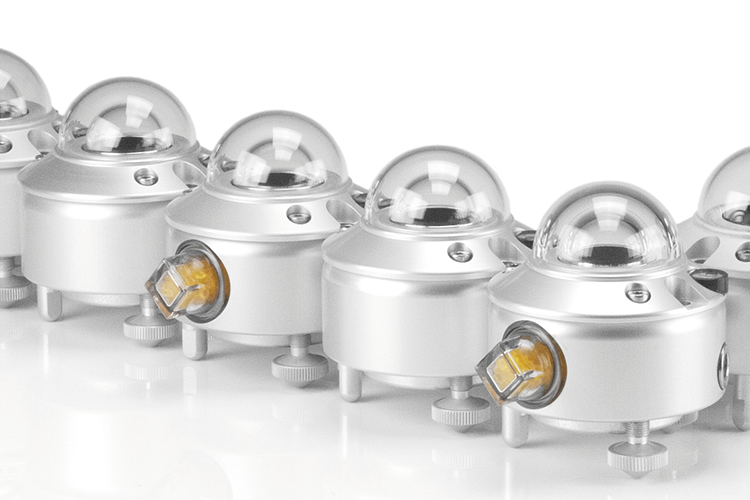In fact this is not true. If you look at the brochure for our pyranometer range you will find that CMP10 and CMP11 share the same column in the CMP model range specification table, as do the SMP10 and SMP11 modesl in the SMP range table.
All four pyranometers meet the requirements of the new ISO 9060:2018 Class A and the previous ISO 9060:1990 Secondary Standard. For each pyranometer you can expect the uncertainty in the measurement of the daily total of Global Horizontal Irradiance (GHI) to be within about 2% under most measurement conditions; without applying any corrections to the data.
So, what is the difference?

When you look at a CMP11 or SMP11 you will see that there is a drying cartridge filled with desiccant; self-indicating silica-gel beads that change colour from orange, through yellow, to transparent as they absorb water vapour. However, the CMP10 and SMP10 have an internal desiccant instead, as explained below.
Pyranometers have a number of seals and joints that can allow air and water vapour to slowly ‘breathe’ in and out with changes in ambient temperature and pressure over time. If this builds up to a sufficient concentration and the temperature drops low enough (usually in the early morning before dawn) the pyranometer can go through a dew-point and water condenses on the inside of dome(s).
This significantly affects the solar radiation measurements as light is absorbed and scattered by the droplets. If droplets get onto the black absorber coating of the detector they permanently affect the sensitivity, reducing it by around 20%, even if you later dry out the pyranometer. To prevent this internal condensation, the instrument is fitted with a desiccant to keep the internal humidity low.
Traditionally, pyranometer designs have an external drying cartridge. This should be visually checked monthly to see if the desiccant needs replacing and only takes a few seconds during scheduled maintenance for cleaning the dome and checking the alignment. However, the silica gel will require changing periodically, which is a simple process but does need some care and takes up to 10 minutes. Depending on the local climate conditions this could be required every 3-4 months.
To save this maintenance time and cost, the CMP10 and SMP10 are filled internally with a different desiccant called ‘molecular sieve’ that can absorb more water than silica-gel but does not change colour. If the seals of the pyranometer are not disturbed or damaged (for example by dropping the instrument) the molecular sieve should remain effective for 10 years. As a precaution, when the pyranometer is recalibrated at a Kipp & Zonen approved facility (recommended every two years) the desiccant is replaced during the inspection and test procedure to ensure a long life.
In the end, it comes down to customer preference. Organisations with an older installed pyranometer base often have it written into their operation and maintenance procedures that the desiccant must be regularly inspected and changed when necessary and for these users it may make sense to continue buying the 11 models. For new plants the CMP10 or SMP10 are usually specified because of the reduced maintenance costs.